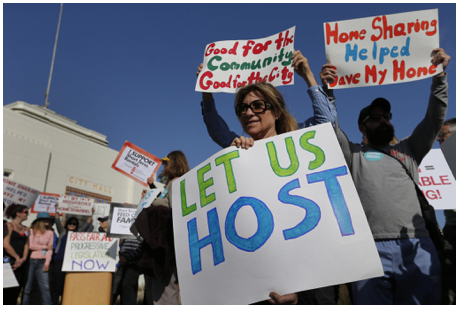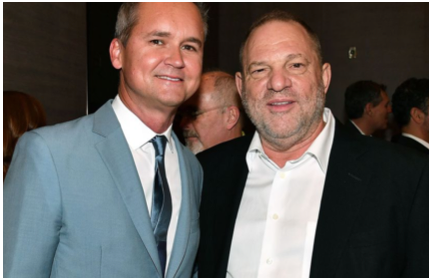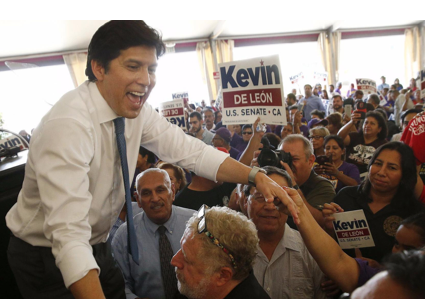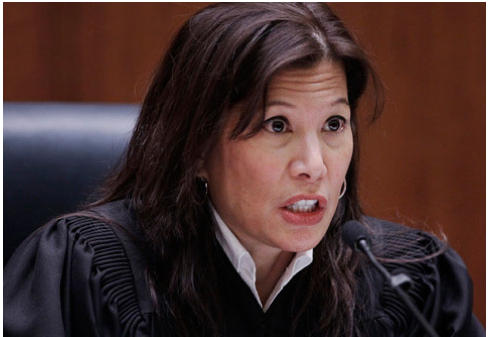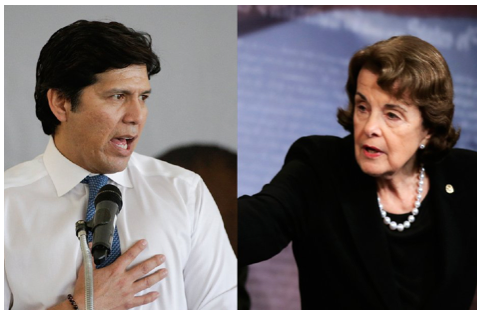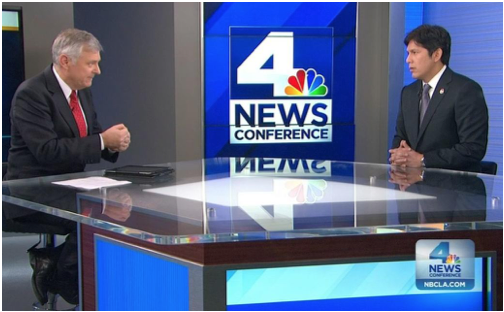GELFAND’S WORLD--If preserving those things that merit protection is the core conservative idea, then surely that idea ought also to apply to preservation of the natural environment -- in a word, environmentalism as a conservative concept. Yet the current generation of American conservatives has rejected the idea of environmentalism.
Just look at Donald Trump's appointees to major departments. If ever the word deplorable fits, it's here. What's curious is that the American conservative rejection of environmentalism is based on a line of reasoning that is illogical -- it is essentially an erroneous confession that some sort of radical left wing ideology is ultimately necessary for environmental preservation to succeed. In this, modern American conservatives are wrong -- if only they could see it.
The best example of a critical environmental danger is of course global warming. The scientific arguments are well established, the observational data are compelling, and this year's hurricane season was the icing on the cake.
Yet when asked to comment, members of the American conservative establishment evade and avoid with the de rigueur answer that it isn't the appropriate time to talk about the subject.
Conservatives have used various excuses that probably don't ring true even to themselves -- global warming doesn't exist, or it isn't caused by human CO2 emissions, or it isn't susceptible to anything we humans can do. But when you read their comments to each other, they take a rather different tack.
Their core argument is less based on atmospheric science and more based on socioeconomics.
In a word, they manage to terrify each other with the claim that environmental activists are using global warming to take over the world economy through taking over its governments in some sort of international cabal. Basically, the claim of global warming is treated as some sort of hard-left socialist plot. They don't always use this terminology, but the common thread is apparent. If they give in to the notion of global warming, it follows (they think) that Americans will lose their sovereignty to world government.
In a way, it's possible to imagine a little of what they are thinking. A lot of modern environmentalism (going back to bills signed by Richard Nixon) involves the use of a command economy. Coal fired power plants have been limited in terms of their ability to pollute the air with sulfur dioxide. One way to do this is to pass laws that set absolute limits on the mass of sulfur dioxide that is emitted. Another way is to put absolute limits on the amount of sulfur that coal can contain. Now expand this approach to thousands of other issues ranging from water quality to agricultural pesticides and you have the modern critique of environmental protection.
Each such rule involves the creation of a new bureaucracy (mainly in the federal government), new taxes (call them fees), and new schedules of fines and penalties. The new bureaucracy will demand specific devices be installed in power plants in order to monitor the amount of pollutants that are emitted and will demand shelves full of reports.
And then there is conservative fear over the preservation of natural wonders. In order to preserve some of the more delicate aspects of our western deserts, it is necessary to limit the amount of cattle grazing. In order to preserve scenery in national parks, it is necessary to prohibit mining.
All of these attempts at preservation are viewed by some people as impositions. Of course it is mainly those who have a financial stake in grazing cattle on fragile habitat or opening new oil fields in Alaska.
Over the years, the right wing has built a collection of arguments that don't exactly defend the desecration of the natural environment, but do manage an end-run by calling environmentalists names. Any attempt to limit the use of national lands is treated as left wing socialism or worse. George H.W. Bush famously referred to environmental activists as "the spotted owl crowd."
It's when the subject gets around to global warming that the argument gets really paranoid. The right wing understands deep down that fixing global warming will require a substantial effort, and that this effort requires the commitment of most of the world's countries. Somehow we have to figure out how to reduce net emissions of carbon dioxide and methane. Equally to the point, we don't have forever. I suspect that a lot of industrialists (Exxon for example) understand the basics. On the other hand, they don't want to commit corporate suicide by going out of the oil or coal business, at least until they have substituted some other income stream.
The cynical, dishonest side of the conservative wing have made use of the anti-government phobia of a lot of Americans. They have tried to sell the argument that global warming is just a ploy to allow the lefties to take over the country and ultimately the world. It's a bit ironic, but the right wing noise machine has been raising the specter of a dictatorship that would arise if we as a people (and as a world) were to take global warming seriously.
In a way, they are confessing that they lack the ability to imagine any other way to do things on an international level than imposing a socialist dictatorship. They seem to be missing the point that western nations managed to join military alliances without giving up their national sovereignty. And at the height of the Cold War, the United States and the Soviet Union (were there ever two more different governments?) managed to find mutual benefit in reducing our numbers of nuclear warheads.
Yet American conservatives are caught up in the paranoid notion that even to admit the existence of global warming is to consign the world to some sort of malign world government, most likely taken out of the pages of nineteenth century Marxism.
What's absurd about this argument is that we don't necessarily have to agree on any particular economic approach to global warming. We merely have to agree that it exists and that humans burning fossil fuels are the prime cause. In short, Americans should agree that there is a real problem that has been identified by careful (and robust) science, and that this problem exists independently of our various economies and governments.
That, you would think, is a simple enough requirement. Americans don't have to join the revolutionary socialist brotherhood or the moderate wing of the Republican Party. They just have to understand that global warming is real and is hugely dangerous to our children and grandchildren.
Once we gain that level of understanding, it is then possible to carry on a rational discussion of what we are to do about it. Conservatives like to talk about market based solutions. I say go for it. Let's hear what you can come up with.
But let's be real about the danger and let's consider possible remedies with a critical eye. Your grandchildren's lives and health may depend on it. What could be more conservative than doing something about the problem?
The eight hundred pound gorilla (or is it the elephant? -- I never can keep these metaphors straight) is our growing human population. We humans have taken over the majority of the planet's surface in order to develop our own life style, in spite of the fact that we are responsible for an ongoing extinction event that rivals previous extinctions. We should think about controlling our numbers in order to preserve the world that humans developed in. And what could be more conservative than that?
Conservative Environmentalists
Let's recognize that there are conservatives who are also environmentalists. They have written numerous books including Peter Huber's Hard Green. One recent essay by Paul Foote was published in The Guardian. I'd like to close by quoting a short excerpt from Foote's essay:
"Whilst recognizing the need for political and policy leadership, policy-making must reject statist penalties and punishments which will not bring about the changes we need and will only put people off. We must go with the grain of human nature.
"Preserving our natural heritage, the beauty of the landscape, the farmed environment; promoting social justice by beautifying urban spaces and greening energy supply; enhancing public health, national security, economic competitiveness – these are all challenges that require action both in the UK and the US.
"But until they can be put into the natural language of conservatives, progress on these issues will suffer. And if the Tea Party were willing to think about the environment from a true conservative perspective, who knows, it just might suit them."
Foote has included conservative terms such as statist in his remarks, but the overall idea that conservatives can and should become environmentalists has merit.
(Bob Gelfand writes on science, culture, and politics for CityWatch. He can be reached at [email protected])
-cw


